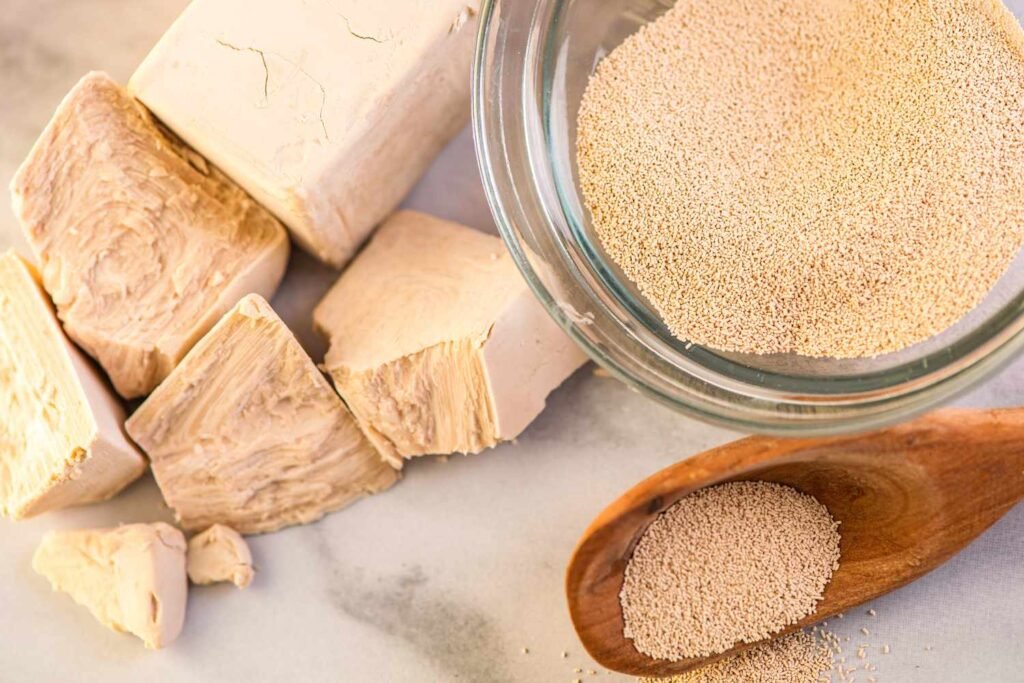Yeast plays a crucial role in baking bread, transforming basic ingredients into a delicious, fluffy loaf. As a living organism, yeast is responsible for fermentation, which creates carbon dioxide and alcohol, leading to the bread’s rise and texture. Understanding yeast’s role helps bakers perfect their craft and produce the best bread possible.

The Basics of Yeast
Yeast is a type of fungus that thrives in warm, moist environments. Two main types of yeast used in bread-making are active dry yeast and instant yeast. Both types serve the same function but differ in how they are activated and used. Yeast is typically added to dough along with flour, water, salt, and sometimes sugar.
Yeast Fermentation
Fermentation is the magic behind bread-making. When yeast feeds on the sugars in flour, it produces two key byproducts: carbon dioxide and alcohol. The carbon dioxide gets trapped in the dough, causing it to rise. This process, known as leavening, is essential for creating light, airy bread with an appealing texture.
As the dough rises, the alcohol evaporates during baking, leaving only the desired flavors. Longer fermentation periods develop more complex flavors, which is why artisanal breads often undergo extended fermentation.
How Yeast Affects Bread’s Texture
Yeast’s production of carbon dioxide during fermentation is what makes the dough expand. This process creates tiny air pockets throughout the dough, contributing to a soft, light texture. The gluten network in the dough traps the gas and provides structure, allowing the dough to rise. As the dough is kneaded, gluten forms a strong network that holds the carbon dioxide produced by yeast, enabling the dough to rise fully.
The yeast also impacts the crumb structure of the bread. Longer fermentation results in a more open crumb with larger air pockets, while shorter fermentation produces denser bread with smaller air holes.
Yeast and Flavor Development
Yeast not only affects the texture of the bread but also its flavor. During fermentation, yeast produces organic compounds such as acids, esters, and aldehydes, which contribute to the bread’s taste and aroma. Longer fermentation periods create more complex, nuanced flavors. This is why slow-fermented breads like sourdough have a deeper, more pronounced flavor profile.
The Proofing Process
The first rise after kneading the dough is called proofing or bulk fermentation. During this stage, the dough rests in a warm environment, giving yeast time to ferment and expand the dough. The dough should typically double in size during proofing. This step is critical for ensuring the dough develops the proper structure, air pockets, and flavor.
After proofing, bakers punch down the dough to release excess air before shaping it and allowing it to proof a second time. The second rise further enhances the bread’s texture and flavor.
The Role of Yeast in Different Types of Bread
Yeast plays an important role in many different kinds of bread, from soft white loaves to rustic sourdoughs. The amount of yeast used and the length of fermentation influence the final product:
- Quick Breads: Some breads, like banana bread or cornbread, use baking soda or baking powder as leavening agents instead of yeast. These breads don’t require fermentation and are denser.
- Yeast Breads: Classic yeasted bread, such as baguettes, brioche, and challah, rely on yeast for both fermentation and leavening. Yeast provides both rise and flavour in these breads.
- Sourdough: Unlike other yeasted breads, sourdough uses wild yeast and bacteria for fermentation. This creates a tangy flavor and chewy texture and often involves a longer fermentation process.
Troubleshooting Yeast Problems
Baking with yeast can present challenges. Here are a few common issues and how to address them:
- Dough doesn’t rise: This may happen due to expired yeast, water that’s too hot or cold, or insufficient fermentation time. Check the yeast’s expiration date and ensure the water temperature is between 100-110°F (37-43°C).
- Overproofed dough: If dough rises for too long, the yeast may consume all the sugars, and the dough could collapse. Avoid this by monitoring proofing times and environmental conditions.
- Underproofed dough: If the dough doesn’t rise long enough, it may be dense and heavy. Ensure the dough has fully doubled in size before continuing to the next step.
Conclusion
Yeast is the key ingredient that brings bread to life. It transforms a simple mixture of flour, water, and salt into a light, fluffy loaf. By understanding yeast’s role and how to manage it, bakers can create delicious, well-textured bread with complex flavors. Whether you’re baking a simple loaf or experimenting with artisanal breads, yeast is essential in shaping every bite.

